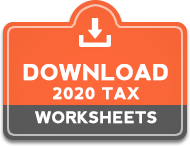
Government of Canada Introduces Amendments to Foreign Buyer Ban
April 6, 2023
Commentary on the Federal Budget 2023
April 18, 2023Jason Heath: Decision on when to apply for CPP becomes clearer when you think of it as an investment, not income
The Canada Pension Plan (CPP) retirement pension is a monthly pension paid to Canadians over the age of 60 who contributed from their employment or self-employment earnings during their working years.
The recent rise in interest rates has been a blessing for conservative fixed-income investors, especially those approaching retirement or already there. Those higher rates, however, come in response to higher inflation, which imposes costs of its own.
Retirees can get the best of both worlds by effectively buying a 25-year, inflation-protected, high-interest rate guaranteed investment certificate (GIC) from the federal government, but surprisingly, most do not take advantage.
What exactly am I talking about?
The Canada Pension Plan (CPP) retirement pension is a monthly pension paid to Canadians over the age of 60 who contributed from their employment or self-employment earnings during their working years. While many think of CPP as an income stream, I believe envisioning it as an investment account holding a 25-year high-interest rate GIC can lead to better decisions in terms of when retirees should elect to start receiving the pension.
First, let’s look at how CPP works. A 65-year-old generally needs 39 years of maximum contributions to receive the maximum CPP pension at that time. Some situations that may impact a pension amount are working while receiving CPP, contributions made after age 65, periods of low or no salary, periods of caring for children under the age of seven, periods of disability, pension sharing with or the death of your spouse or common law partner, or a divorce or separation. You can request a CPP statement of contributions from Service Canada to obtain an estimate of your future retirement pension.
The earlier you start your CPP retirement pension — as early as age 60 — the lower your payments. You may receive the pension sooner, but you trade off a lower monthly payment for life. CPP deferral will increase your pension, but you need to have other income or savings to be able to make that deferral decision.
The monthly maximum CPP at age 65 is currently $1,307, which is $15,679 per year. However, the average pension is only $811 per month, which is $9,735 annualized. Imagine a potential applicant turns 65 in 2023 and is entitled to the average pension and defers it to age 70. For each month of deferral after age 65, that retiree’s pension would increase by 0.7 per cent. That comes to 8.4 per cent per year.
Over the past 30 years, only about two per cent of pensioners have started their CPP at age 70. There was a sudden spike in 2020 and 2021, with 12 per cent of female applicants in 2020 and 10 per cent in 2021 deferring to age 70. For men, it was a similar story, with seven per cent and 11 per cent of male applicants in 2020 and 2021 being age 70.
Retirees who think about CPP as an income stream rather than an investment account may apply for it early to avoid drawing down their other savings or investments. I think retirees should imagine CPP like it is the aforementioned 25-year high-interest rate GIC guaranteed by the government. Let’s do some math.
For a 65-year-old entitled to the maximum CPP, their notional CPP investment account balance would be about $314,000.
If a 65-year-old who has earned the average annual CPP in 2023 of $9,735 defers their pension to age 70, it would be about $15,965 per year by that time. This assumes 0.7 per cent monthly increases (8.4 per cent per year) under the CPP formula, plus an additional two per cent per year for a cost-of-living adjustment (it was 6.3 per cent for January 2023).
Of course, a retiree would need to be able to fund their expenses from 65 to 70 from other sources. Assuming they could, their CPP at age 70 would be the equivalent of $267,000 in a GIC earning four per cent until their age 90 life expectancy. That would be like buying a five-year-GIC at age 65 paying over 6.5 per cent to age 70, to grow a notional GIC from $195,000 to $267,000.
Looking at the same five-year deferral from another perspective, if a 65-year-old had a $195,000 GIC in their RRSP, it would need to earn over 4.9 per cent until their age 90 to provide the same indexed withdrawals as their CPP pension if they deferred it to age 70.
If you think of your CPP like an RRSP, it may help better justify deferring it. Although you may need to draw down other investments in the meantime, would you do it to earn a guaranteed 6.5 per cent in the meantime?
Since 65-year-old women have about a two-year longer life expectancy than men, they, along with any healthy 65-year-olds with longevity in their family, should strongly consider deferring CPP.
CPP applicants with a younger spouse, especially if that spouse is not entitled to the maximum CPP retirement pension themselves, have an added protection. If they die young, there is a CPP survivor benefit payable to their spouse or common law partner.
OAS has different considerations though because it is a means-tested pension. Low-income recipients may be entitled to the Guaranteed Income Supplement (GIS) if they begin their OAS. High-income recipients may have their OAS clawed back due to a pension recovery tax. Unlike CPP, OAS does not have a survivor benefit either.
Retirement planning has a lot of financial, investment, psychological, tax and estate considerations. Sometimes, doing the default — like applying for CPP and OAS at 65 — may be the wrong approach.
The average 65-year-old’s CPP pension is like a $195,000 RRSP. If they defer their pension, it is guaranteed to grow. If that makes it easier to consider using other savings or investments between 65 and 70, it may be a good way to think of CPP. I hope my take can contribute to reversing the downtrend in applicants deferring their pensions.
Post Credit: Storeys By Howard Chai
(https://storeys.com/canada-foreign-buyer-ban-amendments/)







